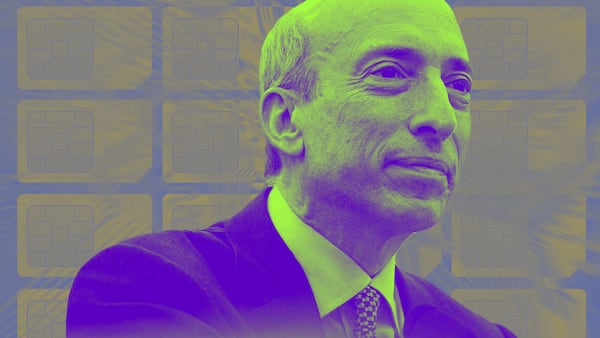- Undercollateralised crypto lending platform Goldfinch just suffered its third default.
- Those burnt by the loss are calling on Goldfinch to reimburse users with funds from the protocol’s $107 million treasury.
- Critics say the repeated defaults highlight the difficulty of underwriting emerging-market loans.
Lenders using decentralised finance protocol Goldfinch are facing a big hit after another large borrower defaulted on its debts.
Borrower Lend East previously took out $10.2 million worth of loans backed by Goldfinch users.
In an April 1 update, Warbler Labs, the company behind the Goldfinch protocol, announced Lend East would be able to repay only around $4.25 million of the loan, and said it expected Lend East to default on the remaining $5.9 million when the loan matured on April 3.
“Warbler Labs is engaging external counsel to explore all rights and remedies that are available to the community to maximise recovery,” the company said.
The situation with Lend East marks the third default users of the Goldfinch protocol have suffered since it started operating in January 2021.
Critics say the repeated defaults highlight the difficulty of underwriting emerging-market loans and expose serious problems with the Goldfinch protocol’s model.
Goldfinch users say that the Lend East loan’s initial credit assessment was “poorly executed” and that both Goldfinch and Lend East failed to provide backers updates on the loan over the past year.
‘The lowest quality borrowers’
The Goldfinch protocol lets its users underwrite undercollateralised loans to companies across the globe, many of which operate in emerging markets.
In traditional finance, such loans are risky and therefore yield high returns. In DeFi, where double-digit annual returns are common, Goldfinch fits right in.
“Underwriting emerging-market loans has always been difficult and putting them on crypto rails doesn’t change that fact,” Tze Donn Ng, an investment associate at Tioga Capital Partners, told DL News.
Ng said that weak regulations in emerging markets, generally low creditworthiness, and adverse selection all contribute to the difficulty. “Only the lowest quality borrowers will go to you, otherwise they would borrow from banks or credit funds,” he said.
Instead of conducting credit assessments for loans itself, Goldfinch relies on a decentralised group of auditors to approve borrowers for the protocol to consider. Those who backed the Lend East loan have accused the auditors of doing a poor job on the loan’s initial credit assessment.
“Initial Goldfinch credit assessment has been poorly executed — or assessor poorly selected — as we end up with multiple default on multiple loans,” a user posting under the name felix2545 said in the Goldfinch Discord — a messaging app.
DL News asked Warbler Labs CEO Mike Sall and chief technology officer Blake West for comment. West directed DL News to Goldfinch’s April 1 announcement and didn’t comment further.
‘A model problem’
Goldfinch’s business model is not a new one.
Banks and credit funds have long lent money in emerging markets, but calculating the risks of underwriting such loans is much more complex than lending in developed countries, such as the US.
“DeFi adds efficiency to structuring, capital formation, and deployment, but none of that matters if you don’t have strong underwriting and recourse,” Ryan Rodenbaugh, founder of crypto research and development company Wallfacer Labs, told DL News.
Despite Goldfinch’s best efforts, relying on third parties to source borrowers and assess risk may just be too difficult to make work.
“It’s a model problem,” Ashish Anand, founder of asset tokenisation platform Bru Finance, told DL News. “Not only Goldfinch, but anything that is structured as a credit fund where they rely upon third parties to do sourcing.”
Despite the defaults, Goldfinch has also facilitated 13 loans that were fully repaid. Another eight are listed on the Goldfinch website as “on time.”
A substantial hit
The latest default represents 7.7% of the amount of all active loans outstanding on Goldfinch. Those burnt by the loss are now calling on Goldfinch to reimburse users with funds from the protocol’s $107 million treasury.
Combined with Goldfinch’s previous defaults of a $5 million loan to Kenyan company Tugende, and $7 million from US-based credit fund Stratos, the protocol’s total losses sit at almost $18 million.
In the case of Stratos, Warbler Labs took on the full risk and responsibility of recovery, and backstopped losses for Goldfinch users. The Goldfinch DAO also voted to allocate $1 million in USDC from its treasury to cover losses from the Tugende loan.
DL News asked Warbler Labs’ West if the firm is considering backstopping the losses from Lend East’s loans. He didn’t immediately respond.
Another one of Goldfinch’s loans is also looking precarious. Almavest, a company that lends money to ESG-focused companies in India, Egypt, Indonesia, Colombia, Spain, Philippines, and other markets, is currently late in repaying a $2.1 million loan.
Whether Goldfinch will be able to bounce back from its recent default remains to be seen.
“To solve the existing issues, they will need to go through the regulatory route and restructure debt,” Tioga Capital’s Ng said. “Though this does not fix the long-term problem of poor underwriting.”
Tim Craig is DL News’ Edinburgh-based DeFi Correspondent. Reach out to him with tips at tim@dlnews.com.







